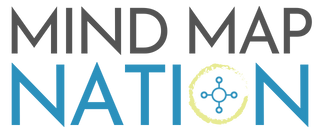OODA Mind Maps for Making Better Decisions
MMN member Chris Rodgers kindly taught a Masterclass on how he uses the OODA Loop framework to construct a mind map for managing his project: selecting a distance learning platform that thousands of students will use at the university he works with.
It’s great stuff and has already helped several folks sort through their work priorities 👊 Below are the key takeaways.
Where to start? One of the challenges of mind mapping is not knowing how to start with your first nodes. The OODA framework provides a framework for starting a mind map for decision making and taking action.
From Chaos to Order: OODA stands for Observe, Orient, Decide, and Action. The Observe and Orient nodes explode out the project complexities while the Decide and Action nodes are far cleaner with clear cut, what else, decisions and actions!
In Observe, Chris expands all the project components and steps, both past and present so that he can take into account without judgment and track their progress.
Orient step is an audit of your environment. In other words, keeping in mind factors that that influence the success of your project, such as lessons learned from past experience, the nature of the stakeholders and team, tools and procedures.
Decide distills the information from Observe and Orient into clear decisions. In Chris’ case, it’s using mind maps and OODA to keep his process objective, enforcing his boundaries when it comes to availability, and using MindNode and Obsidian as project management tools.
Actions are concrete steps to completing the project. Chris focuses on a handful of actions that’ll yield the greatest results. For him, it’s managing volunteer submissions, reviewing the evaluation rubric, and developing his mind mapping system.
Rule of 3’s: To keep things simple, most of Chris’ Decide & Action branches only have 3 child nodes.
Objectivity: Mind maps get the complexity and noise out of our heads. We can then have a more objective discussion around what’s on paper with stakeholders and reduce misinterpretation. It’s a clearer way of communication. We’re also able to separate ourselves emotionally from the information to make better judgement calls.
Become a member today to watch the full recording in our growing Library.
Make the most of your mind maps
Thanks for reading this article. If you found it useful, you can get a new mind map in your inbox every week. Epiphany is your dose of structured thinking and ordered chaos.

